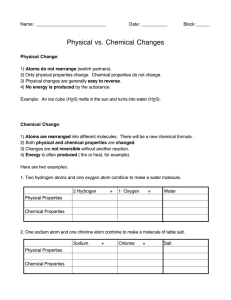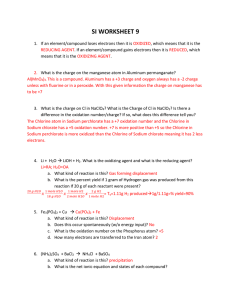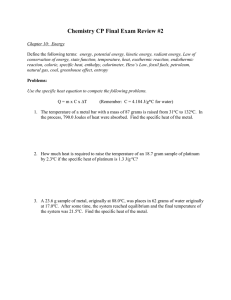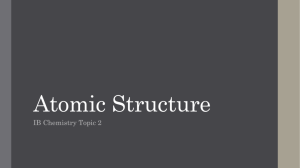Leo Lin
advertisement
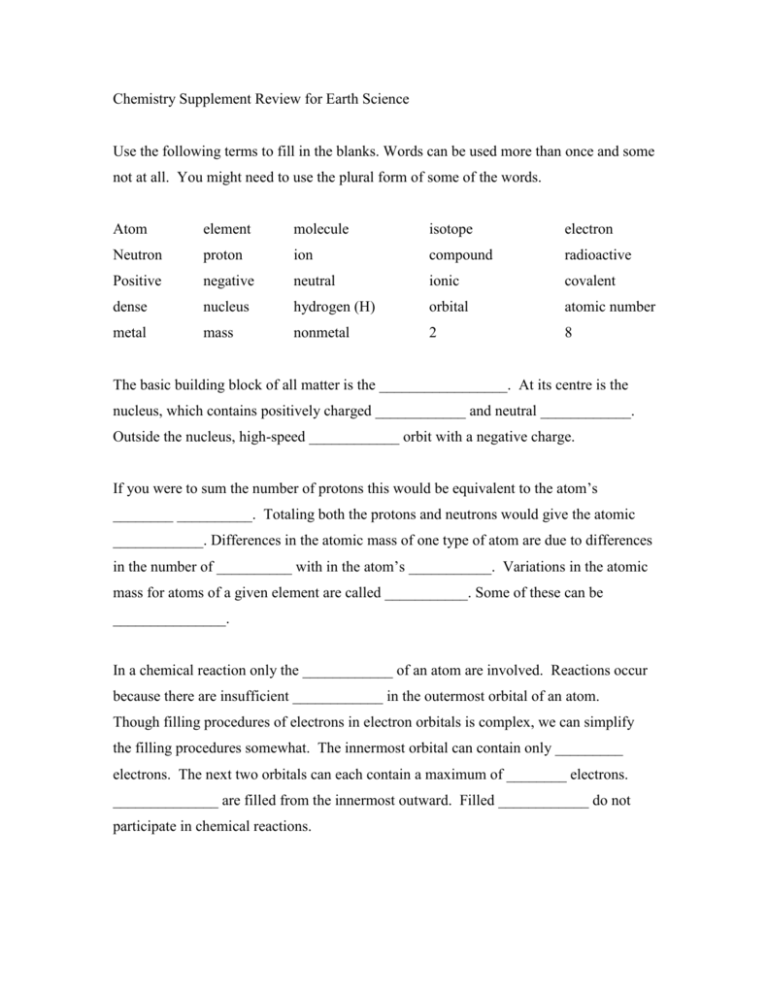
Chemistry Supplement Review for Earth Science Use the following terms to fill in the blanks. Words can be used more than once and some not at all. You might need to use the plural form of some of the words. Atom element molecule isotope electron Neutron proton ion compound radioactive Positive negative neutral ionic covalent dense nucleus hydrogen (H) orbital atomic number metal mass nonmetal 2 8 The basic building block of all matter is the _________________. At its centre is the nucleus, which contains positively charged ____________ and neutral ____________. Outside the nucleus, high-speed ____________ orbit with a negative charge. If you were to sum the number of protons this would be equivalent to the atom’s ________ __________. Totaling both the protons and neutrons would give the atomic ____________. Differences in the atomic mass of one type of atom are due to differences in the number of __________ with in the atom’s ___________. Variations in the atomic mass for atoms of a given element are called ___________. Some of these can be _______________. In a chemical reaction only the ____________ of an atom are involved. Reactions occur because there are insufficient ____________ in the outermost orbital of an atom. Though filling procedures of electrons in electron orbitals is complex, we can simplify the filling procedures somewhat. The innermost orbital can contain only _________ electrons. The next two orbitals can each contain a maximum of ________ electrons. ______________ are filled from the innermost outward. Filled ____________ do not participate in chemical reactions. ____________ bonds occur when a _________ ion gives an ___________ and when a ____________ ion accepts an electron. An important example occurs between sodium, a ____________, and chlorine, a ______________. Chlorine gains one ______________ while sodium loses one ______________. This results in sodium having a net ____________ charge and chlorine having a net ____________ charge. When electrons are shared equally by two atoms, a ________________ bond occurs. No charges, not even slight charges, occur within the resulting ____________. Covalent bonds can form between two identical __________ atoms or two different nonmetal atoms. The resulting structure in both cases is called a _______________.

